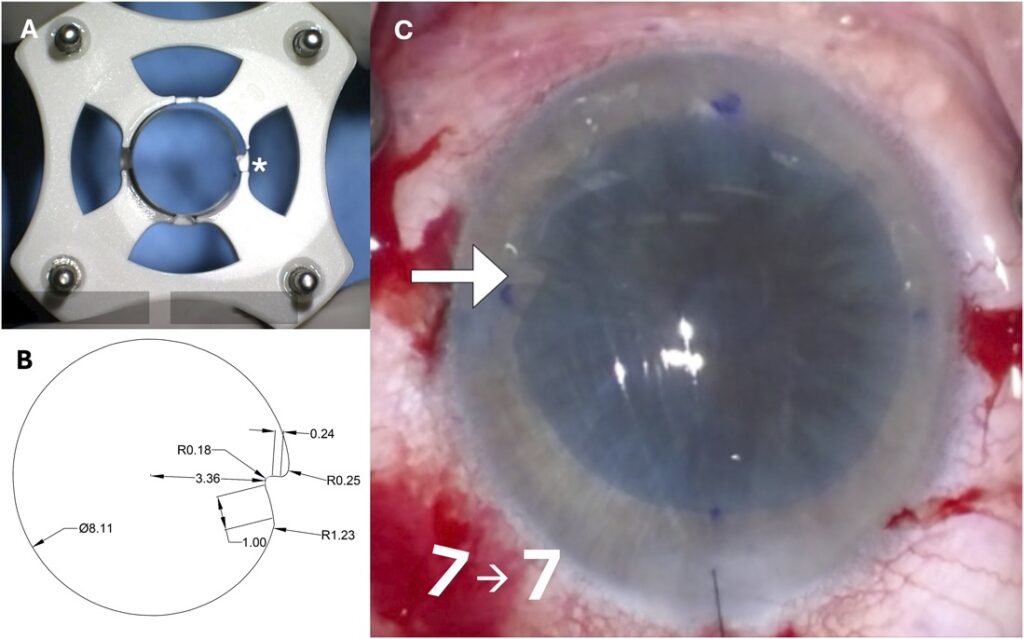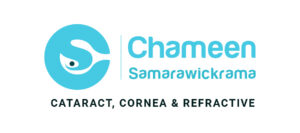Ophthalmology is an evolving domain with rapid developments taking place regularly in the field. However, corneal surgery remains a challenge, and new advancements are needed to reduce complications and improve outcomes.
In recent years, Descemet membrane endothelial keratoplasty (DMEK) has emerged as the preferred method for treating endothelial diseases of the cornea. However, despite its many benefits, the adoption of DMEK has not been as per expectations. One of the reasons for slow adoption is the complexity of tissue preparation and the risk of complications during surgery.

However, things are about to change for the better with a groundbreaking breakthrough in this field in the form of a novel asymmetric marking trephine called the “Number 7” trephine. Let’s uncover how this tool will make DMEK surgery quicker and safer, and also bring down many barriers that have stopped the progression of this technique.
Comprehending the Challenges of DMEK
DMEK is a delicate procedure. It involves transplanting a thin layer of the donor’s Descemet membrane (DM) and endothelial cells onto the patient’s cornea. Compared to other methods DMEK offers faster recovery times. Moreover, the results are better and there is a lower risk of complications.
However, despite the advantages, many surgeons find the process complex. The main reason for that is the extreme thinness of the tissue, which makes it very fragile and difficult to handle. There are some other challenges as well. For instance, the preparation of donor tissue requires precision and added care to prevent tearing and incorrect graft placement. According to a survey, 64% of surgeons are most concerned about incorrect tissue insertion. Half of the participants were worried about the process of tissue preparation itself.
Based on these concerns, it is quite clear that a solution is needed to simplify the process of transplanting the extremely fragile tissue.
The “Number 7” Trephine: A Much-Needed Breakthrough
The “Number 7” trephine introduces an asymmetrical marking system that simplifies the tissue preparation process while reducing the risk of damage. It has optimized curves that spread mechanical forces more evenly during the peeling of the Descemet membrane. Due to this evolved peeling mechanism, the chances of tears or other damage are reduced significantly.
Conventionally, surgeons used to mark the tissue to ensure proper orientation during surgery. However, this has been a time-consuming and error-prone step. However, with the “Number 7” trephine, the marking step is integrated into the tissue preparation process, which makes the overall process safer and faster.
Main Findings in the Study of “Number 7” Trephine
Let’s have a look at some of the major findings in the “Number 7” Trephine study:
- Comparison of Techniques:
- The study evaluated 20 DMEK surgeries using the “Number 7” trephine against 20 surgeries using the traditional modified shark fin technique.
- Faster Tissue Preparation:
- The “Number 7” trephine significantly reduced donor tissue preparation time.
- The average preparation time dropped from 7.6 minutes (traditional method) to 5.4 minutes (with the new trephine).
- Safety and Fewer Complications:
- Despite the faster preparation, the new trephine resulted in no complications during tissue preparation.
- In contrast, the traditional group experienced 2 complications.
- Shorter Graft Manipulation Time:
- The total surgical time remained similar between both groups.
- Graft manipulation time was shorter with the “Number 7” trephine, reducing from 6.8 minutes (traditional) to 5.1 minutes (new trephine).
- Reduced Risk of Surgical Complications:
- The shorter manipulation time with the “Number 7” trephine decreased the likelihood of complications during the surgery.
The evidence gained through the study clearly suggests that this breakthrough promises faster surgical procedures, enhanced safety, and fewer complications.
Final Thoughts
Going through the evidence in the study, it is clear that The “Number 7” Trephine is a remarkable breakthrough in DMEK surgeries as it makes the process faster, safer, and more accessible. The accessibility comes from the fact that in the long run, it can make the process much more economical, allowing people on limited budgets access to this advanced surgery.
Moreover, due to fewer complications and lower risk of tissue damage, this innovation could lead to better outcomes for patients and a rise in the adoption rate of DMEK among surgeons.
Slowly but surely, as more surgeons and tissue banks begin to incorporate this tool into their practices, we will definitely see a positive change in corneal surgeries.

It is truly a proud and humbling moment to present our work on the “Number 7” Asymmetric Trephine at World Cornea Congress IX—a gathering that only happens once every five years. What started as an idea is now a tool, manufactured by Corza Medical, that’s helping make DMEK surgery safer and more accessible for surgeons across the globe. The interest and feedback from peers around the world have been incredibly encouraging. Grateful to be part of a community that constantly strives to do better for our patients.
Outstanding post